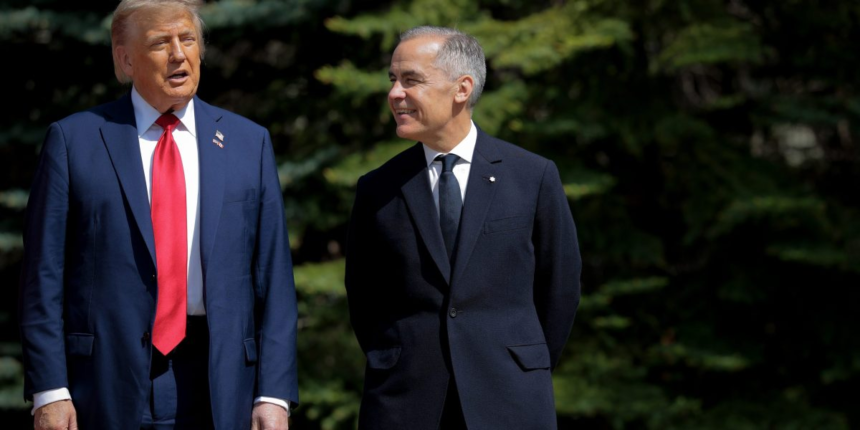The Bank of Canada has slashed rates by 225 basis points over the past nine months, including 25-point cuts in January and March. The Fed, meanwhile, reduced rates by 100 points from September to December last year but has held rates steady so far in 2025.
As a result, the 10-year U.S. Treasury yield was 4.38% as markets closed on Friday, while Canada’s was at 3.30%.
At the end of January, Canada’s private and public sector held a combined $351 billion worth of Treasury securities. That number surged to $426 billion at the end of March before falling to $368 billion in April, the most recent data available.
After all, Canadian investors bought more Treasuries in April, even as the total value of their holdings declined after revaluing the bonds at current market prices. The big drop suggests America’s northern neighbor has heavy exposure to long-dated Treasury notes and bonds, which are much more volatile than short-term Treasury bills.
“Valuation changes often move in the opposite direction of net U.S. sales/purchases and are often large enough to drive overall changes in holdings,” Fed economists wrote last year. “As such, changes in holdings alone are an unreliable measure of cross-border demand for U.S. or foreign securities.”
The U.S. borrows at much better rates than its underlying finances would normally allow, thanks to the dollar’s status as the world’s reserve currency and confidence that America will always pay its bills.
Foreign investors held just over $9 trillion worth of Treasuries at the end of April, down only slightly from the record set in March. The decline in the dollar this year, Haworth said, has been much more pronounced than any offloading of Treasuries.
That makes sense, he added, because a slowdown in trade affects the flow of dollars first as greenbacks are used in fewer transactions. Changes in the allocation of Treasuries, often held as investments or bank reserves, happen much more slowly.
“There’s probably still some fundamental pressure as we suss out where trade and tariffs end up,” he said.
The Treasury data from April showed foreign private investors were net sellers of long-term U.S. debt. Government institutions like central banks and sovereign wealth funds were net buyers.
Still, it doesn’t seem foreigners are dumping U.S. debt just yet. Even angry Canadians.









